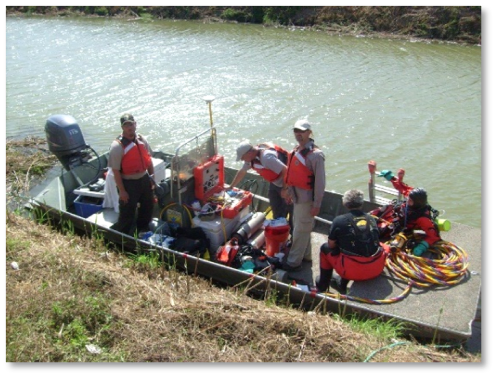 The Donna Reservoir and Canal System site includes a system of irrigation canals and reservoirs containing sediment and fish with elevated concentrations of polychlorinated biphenyls (PCBs). A Baseline Human Health Risk Assessment (HHRA) and an Ecological Risk Assessment (ERA) were conducted to estimate the potential for current/future risk to human and ecological receptors from exposure to contaminants from the Site. The HHRA identified potential concerns for human health from the consumption of fish caught from the Site. Based on the results of the HHRA, PCBs were retained as the only Site-related human health chemical of concern. The ERA identified potential risks for ecological receptors from media at the Site. As with the HHRA, PCBs were retained as the only Site-related chemical of concern. The HHRA determined that exposure to PCBs through consumption of fish poses unacceptable human health cancer risks and non-cancer hazards. Reducing PCB levels in fish and preventing consumption of contaminated fish are two ways to reduce risk. In order to reduce PCB levels in fish, it is necessary to reduce PCB levels in sediment and remove the primary likely source of PCBs. The ERA identified potential concerns for ecological receptors. The human health Preliminary Remediation Goals for sediment also addressed the lowest applicable sediment Preliminary Remediation Goal for ecological receptors.
The Donna Reservoir and Canal System site includes a system of irrigation canals and reservoirs containing sediment and fish with elevated concentrations of polychlorinated biphenyls (PCBs). A Baseline Human Health Risk Assessment (HHRA) and an Ecological Risk Assessment (ERA) were conducted to estimate the potential for current/future risk to human and ecological receptors from exposure to contaminants from the Site. The HHRA identified potential concerns for human health from the consumption of fish caught from the Site. Based on the results of the HHRA, PCBs were retained as the only Site-related human health chemical of concern. The ERA identified potential risks for ecological receptors from media at the Site. As with the HHRA, PCBs were retained as the only Site-related chemical of concern. The HHRA determined that exposure to PCBs through consumption of fish poses unacceptable human health cancer risks and non-cancer hazards. Reducing PCB levels in fish and preventing consumption of contaminated fish are two ways to reduce risk. In order to reduce PCB levels in fish, it is necessary to reduce PCB levels in sediment and remove the primary likely source of PCBs. The ERA identified potential concerns for ecological receptors. The human health Preliminary Remediation Goals for sediment also addressed the lowest applicable sediment Preliminary Remediation Goal for ecological receptors.
Remedial action activities include dredging, transport, and disposal of approximately 15,000 cubic yards of PCB-impacted sediments including ancillary support activities such as sediment dewatering, wastewater treatment, turbidity controls, water quality monitoring, confirmation sampling, restoration of banks and canal bottom, community involvement support, and remedial action subcontractor management.
